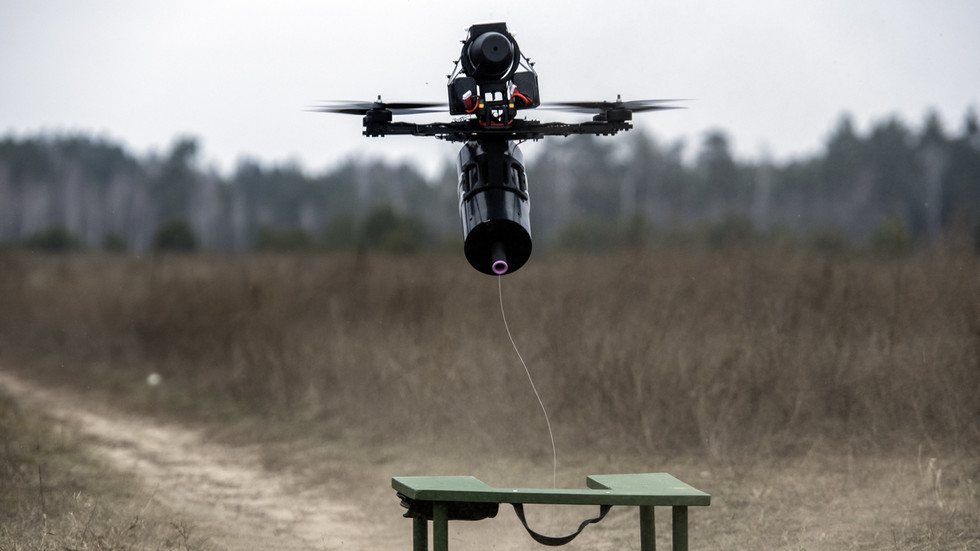US President Donald Trump is among the loudest voices spouting disinformation against wind power. When he took office in January, he ordered a freezeon leasing federal areas for new offshore wind projects and issuing federal permits for projects.
Then, in May, the Trump administration allowed work on a major New York offshore wind project to resume. This week,fishing companies and wind energy opponents filed a lawsuitto reinstate the stop work order.
Wind poweris the largest renewable energy source in the US and currently makes up about 10% of total electricity. Countries like Germany had a share of 28%, with wind power making up the lion share of Denmark's energy mix (58%). In 2024, wind and solar combined generated more electricity in the US than coal for the first time, think tank Ember reported.
False claims about wind energy are amplified on social media. DW's Fact check team takes the wind out of the sail of disinformation by checking some of the most viral claims.
 US President Donald Trump keeps pushing the narrative that 'windmills are driving whales crazy'Image: X
US President Donald Trump keeps pushing the narrative that 'windmills are driving whales crazy'Image: XClaim: Trump has repeatedly alleged that "windmills are driving the whales crazy, obviously." This post sharing a video of Trump has been viewed over 6 million times on X. "You see what's happening up in the Massachusetts's area with the whales." He has referred to different whale strandings, time and again,pushing the narrative that windmills are dangerous to the mammals.
DW Fact check: False
While there have been incidentswhere whales have been washed ashore, the National Marine Fisheries Service,a federal agency within the US Department of Commerce's National Oceanic and Atmospheric Administration (NOAA Fisheries), says "there is no scientific evidence that noise resulting from offshore wind site characterization surveys could potentially cause whale deaths."
At the moment, there are no known links between large whale deaths and ongoing offshore wind activities, the agency said, adding the largest threats to whales were boat strikes, entanglement in fishnets and man-made climate change pushing their prey and thus the whales closer to shore.
 While it's true that birds have been killed by wind turbines, it's not the main driver for the death of birdsImage: X
While it's true that birds have been killed by wind turbines, it's not the main driver for the death of birdsImage: XClaim: Trump has repeatedly said windmills were killing droves of birds. "You want to see a bird cemetery, walk under a windmill sometime," he said in a video that was shared on Xand has been viewed close to a million times.
DW Fact check: Misleading
Yes, birds have been killed by windmills— what Trump fails to mention though is that wind turbines are a relatively small factor when it comes to bird mortality.
According to an overview of median estimates of annual bird deaths by the US Fish & Wildlife Service,the main culprits in the US are cats (2.4 billion), collisions with glass buildings (about 600 million) and collisions with vehicles (about 215 million). Collisions with land-based wind turbines are toward the bottom of the list with about 234,000 deaths a year, well after collisions with electrical lines, communication towers or poison.
Even though wind turbines account only for a fraction of the total, there are several pilot projects underway to cut that number down. Researchers from Oregon State Universityobserved a massive decline in bird collisions when one blade was painted black, installing shapes that resemble eyesor using AI-based anti-collision systems.
 While the photo shows a real dumpsite for old rotor blades, they don't show the full storyImage: X
While the photo shows a real dumpsite for old rotor blades, they don't show the full storyImage: XClaim: Wind energy was "a con" and not truly green as wind turbines weren't properly recycled, this social media user said in a post on X, sharing a photo of a bulldozer burying what looks to be parts of windmills.
DW Fact check: Misleading
The photo is real and was published 2020 in a Bloomberg report showing wind turbines in the ground at the Casper Regional Landfill in Wyoming. It's also available on the stock photo service Getty Images.There are other sites of such wind turbine graveyards in the US, for instance in Iowa and South Dakota, where wind turbine blades are chopped up and buried.
At the moment, about 90% of the mass of a decommissioned wind turbine can be recycled, according to the US Department of Energy.Some renewable energy companies say they recycle up to 95%and have committed to stop sending turbine blades to landfill.
Germany, Austria, Finland and the Netherlands already have a landfill ban in place.And the European wind industry, represented by WindEurope, is calling for a Europe-wide landfill banon decommissioned wind turbine blades by 2025.
Steel towers, concrete foundations and copper cables are relatively easy to recycle, says the Fraunhofer Institute for Wind Energy Systems (IWES) — but since rotor blades are made of different materials, recycling these parts was much more complex.
Even though some of the blades are being repurposed and used as playground equipment, bicycle shelters or material for skis, "the usual disposal method is currently thermal recycling of the shredded rotor blades in the cement industry," Fraunhofer said.
Next-generation rotor blades are recyclable with a new type of resinthat allows for the separation of composite materials so they can be reused.
 A video on X is being shared to claim that wind turbines provide 'inconsistent energy efficiency'Image: X
A video on X is being shared to claim that wind turbines provide 'inconsistent energy efficiency'Image: XClaim: "Just look at the wind turbines. None of them are working," says a social media user, posting a videoshowing wind turbines that aren't turning. "A blot on the landscape and completely inconsistent energy efficiency."
DW Fact check: False
Just because wind turbines aren't turning all the time, that doesn't make them inefficient. Modern turbines are highly efficient, with a capacity to convert 30 – 48% (onshore) and 50% (offshore)of the wind's kinetic energy into electricity.
According to aerodynamics, Betz's law or the "Betz limit" stipulates that the maximum power that a device can theoretically extract is 59% of the available power.
A wind turbine rotates to face into the wind, the blades pick up the wind and feed into a low-speed shaft which runs at the same speed as the blades (7 to 12 revolutions per minute). Since higher rotational speeds are required to produce electricity, most wind turbines have a gearbox that multiplies the rotational speed over 100 times. A connected generator then converts the kinetic energy into electricity.
"Downtime of wind turbines is quite normal or even necessary sometimes," explains a manufacturer of small wind turbines.If there is no wind or not enough of it, the turbine won't run. If the winds are too strong, built-in breaks will kick in to prevent damage. And sometimes, the turbine might be under maintenance. Excess wind energy can be stored in batteries.
If there isn't enough wind for larger turbines to start, they use an electric engine to kickstart the rotation of the blades to be able to harvest even low-speed winds.
Edited by: Astrid Prange de Oliveira, Anke Rasper

 7 hours ago
3
7 hours ago
3









